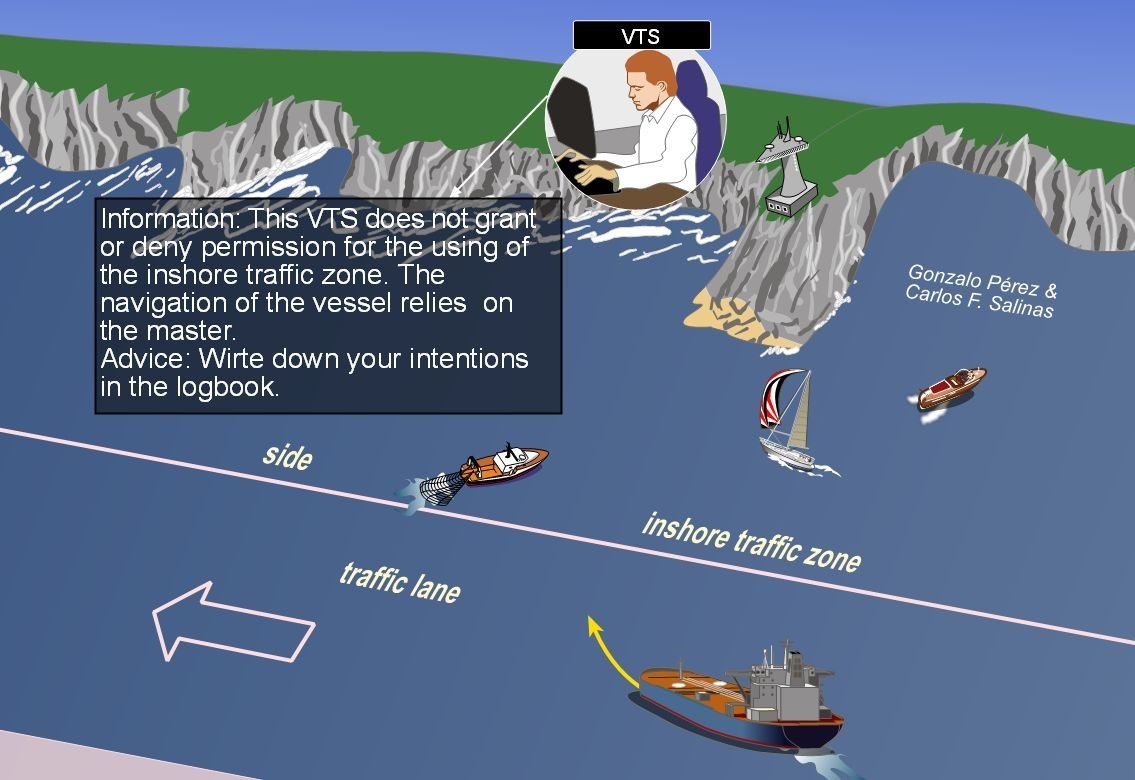VTS AND INSHORE TRAFFIC ZONES (ITZs)
What should be the attitude of a VTS when a power-driven vessel higher than 20 meters length requests permission to use the inshore traffic zone (from now on ITZ) of a traffic separation scheme? This recurring question hides the concern of many VTS operators about what their actions should be in certain circumstances where compliance with the regulations could be affected. In this specific case, the rule presents nuances that must be addressed.
Let's see: the function of the ITZs of a traffic separation scheme is to provide a margin of safety to coastal States in relation to vessels navigating in the traffic lanes, in addition to protecting certain coastal activities, such as fisheries, wind farms or recreational navigation. A power-driven vessel higher than 20 meters length may use the ITZ in the case provided in Rule 10 section d) of the COLREGs, essentially, when the vessel has a destination or origin in a port located in the ITZ.
This vessel can also use the ITZ when she cannot navigate safely within the traffic lane or to avoid an immediate danger. In our opinion, categorizing what it is or not an immediate danger to the vessel, is a responsibility which belongs to the master (SOLAS V Rule 34) so the master should be the one to act accordingly, writing down in the logbook the reasons that lead him/her to use the ITZ. Later on, the Maritime Authority will verify whether these reasons were justified. Unless the Maritime Authority has issued a rule or an instruction considering the opposite, a VTS is not authorized to grant or deny the use of the ITZ.
The role of the VTS is to gather information about why the vessel has made that decision, as well as to alert other users navigating in the ITZ that they may encounter an unexpected vessel in this area. In addition to this, the VTS also has to track the route of the vessel and process all the information concerning this case to handle it to the Maritime Authority, such as, plotters, voice transcriptions, and all prevailing circumstances that affect the case, for instance, weather and traffic density, among others.
An essential aspect of a traffic separation scheme is precisely the location and scope of the ITZs. This strategy can greatly make the Traffic Separation Scheme truly efficient. If non-compliance is continuous, particularly due to cabotage navigation, the possibility of modifying the ITZs in relation to the commercial ports involved should be considered.
Carlos Fernández Salinas
Jefe de Área VTS / VTS Head of Area

